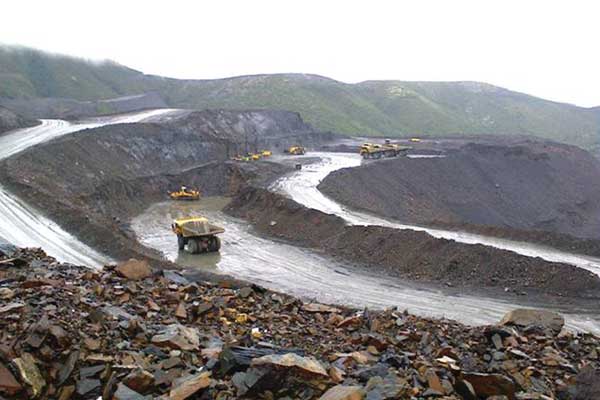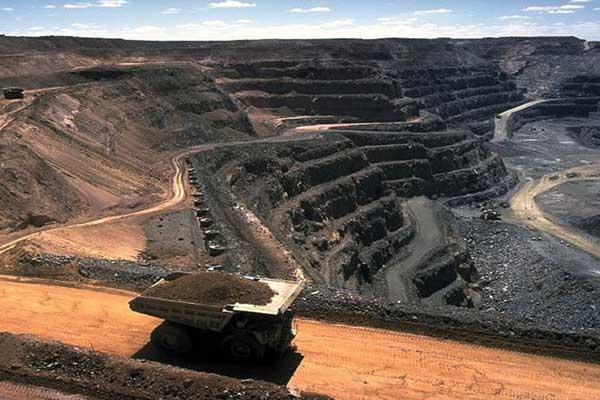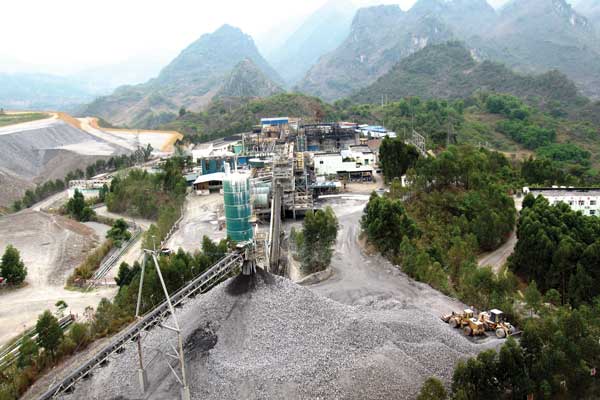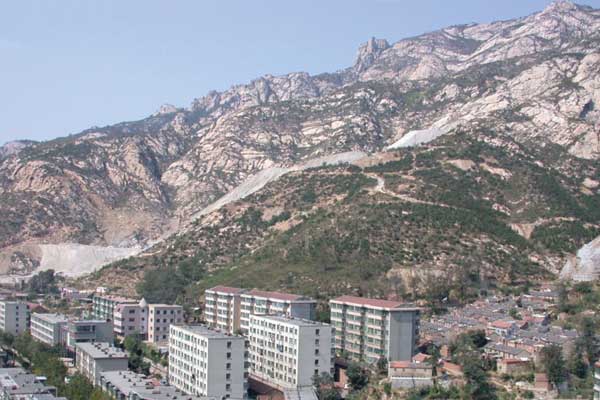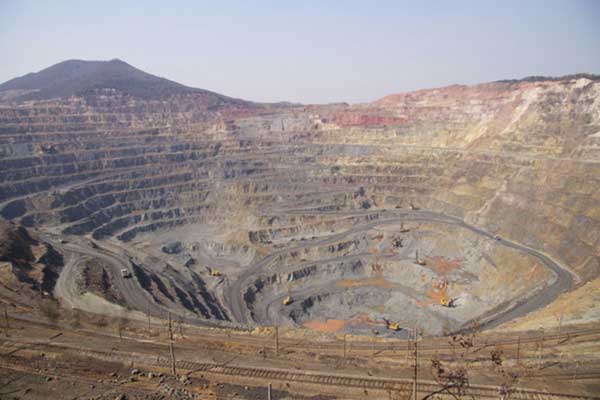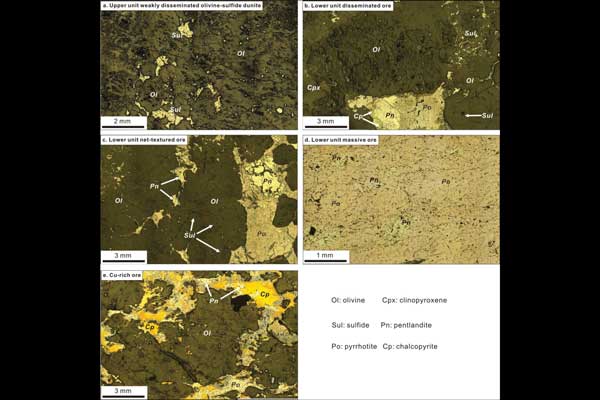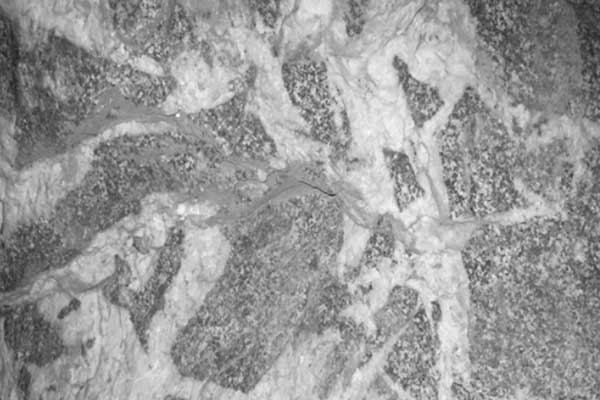SEG 2017
Field Trips
Pre-Conference Field Trips

FT02 - Epithermal Au Mineralization and Associated Hydrothermal Alteration in Southern Kyushu
-
SOLD OUT
E-mail the Conference Organizer to be added to the waiting list: seg2017@g‑i‑events.com
- Details
Post-Conference Field Trips
Field Trip Details
FT01 - Omchak Gold District—Giant Lode and Placer Gold Deposits of Eastern Russian
Date: September 10-15, 2017
Location: Departing from and returning to Magadan, Russia
Leader: Professor Nikolay A. Goryachev
The Omchak gold district is located in southeastern part of the famous Yana-Kolyma gold belt, a belt that has yielded 3,100 t Au from orogenic gold deposits and related placers during the past 85 years. The Omchak district includes three major lode deposits, with past production of about 300 t Au and reserves of >800 t Au at Natalka and Pavlik. The Late Jurassic-Early Cretaceous deposits consist of low-grade disseminated and highgrade quartz vein ore styles by Late Permian volcanoclastic sequences along a major regional-scale fault. Natalka is the largest gold deposit in eastern Russia (>612 t Au), with the main orebody being 4 km long, 1 km wide, and 500 m deep. This trip will allow participants to develop a thorough understanding of the great gold resources and future potential of this part of eastern Russia. Participants must have warm and waterproof field clothing. The temperature in the Omchak area in mid-September typically ranges from +5° to –5°C. Transportation from Magadan to Omchak will be by all-terrain vehicle. The distance is 400 km and will require one day of travel. Daily flights to Magadan depart from Moscow, Khabarovsk, and Vladivostock, with connections through Seoul-Incheon, Tokyo-Narita, Hong Kong, and Beijing to Khabarovsk and/or Vladivostock.
Flights/Airfare: Not included in cost of trip.
Attendee Maximum: 10
- CANCELED
FT02 - Epithermal Au Mineralization and Associated Hydrothermal Alteration in Southern Kyushu
Date: September 10-16, 2017
Location: Departing from and returning to the Kagoshima Airport
Leader: Yasushi Watanabe
This field trip will provide the opportunity to observe the young epithermal gold mineralization and associated hydrothermal alteration in the Ryukyu volcanic arc, Japan. The trip includes visits to the Hishikari low-sulfidation deposit and the Kasuga and Akeshi high-sulfidation deposits in southern Kyushu. This trip also will allow observation of advanced argillic alteration, steam-heated alteration, an active geothermal system, and an active volcano (Kirishima or Sakurajima).
Flights/Airfare: Not included in cost of trip.
Attendee Maximum: 10
-
SOLD OUT
E-mail the Conference Organizer to be added to the waiting list: seg2017@g‑i‑events.com
- Itinerary
FT03 - Porphyry Cu-Au and Cu-Mo Deposits of Southern Mongolia
Date: September 11-15, 2017
Location: Departing from and returning to Ulaanbaatar, Mongolia
Leader: Jargalan Sereenan
South Mongolia is rich in various types of mineral deposits, including Cu-Au and Cu-Mo porphyry deposits and occurrences located within the middle to late Paleozoic island arc terranes of the Central Asian orogenic belt. This trip will visit the Tragaan Suvarga, Kharmagtai, and giant Oyu Tolgoi deposits. We will observe different styles of porphyry mineralization at the various occurrences. At the Tsagaan Suvarga Cu-Mo deposit (240 Mt at 0.53% Cu and 0.018% Mo), ore-related sericitic alteration can be observed overprinting the dominant potassic (K-feldspar) alteration of the main syenogranite. Chlorite-epidote alteration associated with Cu-Au mineralization overprints potassic (biotite-magnetite) alteration at Kharmagtai, with much of the mineralization related to a large tourmaline breccia system. The visit to the Cu-Au-Mo–mineralized quartz monzodiorite intrusions at the Oyu Tolgoi group of deposits (43 million tonnes Cu, 1,850 t Au) will include examination of muscovite- and pyrophyllite-bearing alteration associated with Cu-Au mineralization that was subsequently upgraded by advanced argillic alteration at the Hugo Dummett orebody.
Flights/Airfare: Not included in cost of trip.
Attendee Maximum: 17
FT04 - Carlin-Like Gold Deposits in SW Guizhou Province, China
Date: September 14-17, 2017
Location: Departing from and returning to Guiyang, China
Leaders: Yong Xia, Xingchun Zhang, Jianzhong Liu
Carbonate-bearing sedimentary sequences in southwestern Guizhou Province host China's most important Carlin-like Au deposits. Combined proven gold reserves in these deposits exceed 650 tonnes. Deposits can be divided into strata-bound and the fault-controlled ores. During this field trip into the scenic karst region of SW China, we'll visit the largest Carlin-type Au deposits of each type. The Shuiyindong Au deposits (263 t Au at 5 g/t), controlled by the Huijiabao anticline, are dominated by auriferous pyrite disseminated in Permian bioclastic limestone, with minor orebodies also hosted in calcareous siltstone and argillite, and along a major unconformity. The Jinfeng deposit (165 t Au at 4.7 g/t) is controlled by faults, and typically occurs in the carbonaceous siltstone of the Middle Triassic Xuman and Bianyang formations, with minor Au mineralization in carbonaceous shale and K-feldspar–rich sandstone.
Flights/Airfare: Included in cost of trip.
Attendee Maximum: 17
FT05 - Jiaodong Gold Deposits
Date: September 13-16, 2017
Location: Departing from and returning to the Beijing Airport
Leaders: Hongrui Fan, Kunfeng Qiu, Zhaokun Wang
The Jiaodong gold province on the eastern margin of the North China block is China's largest gold producer and is responsible for about 25% of China's annual gold production. The pre-mining resource in Jiaodong is enormous, with an estimated 4,000 t Au. Gold is now recovered from at least 159 mining operations with a combined annual production in excess of 30 t Au per year. Jiaodong is well recognized as one of the world's great gold provinces, but also is one of the most controversial to classify and difficult to fully understand. More than 95% of the Jiaodong gold resource is hosted by Mesozoic granitoids that intruded Precambrian high-grade metamorphic basement rocks. The most important deposits occur along regional NNE-trending fault zones. Main orebodies are present as quartz vein systems (e.g., Linglong type) and as stockwork veinlets and disseminated mineralization (Jiaojia type). In many places, the two mineralization styles are transitional and thus are present within the same gold deposit. This four-day trip will visit the large underground operations at the Sanshaodao, Xincheng, and Linglong mines, as well as surface exposures of the Jurassic ore-hosting and Cretaceous syngold intrusions, Au orebodies, and ore-controlling structures.
Flights/Airfare: Included in cost of trip.
Attendee Maximum: 18
FT06 - Mineral Deposits of Yunnan
Date: September 21-27, 2017
Location: Departing from and returning to the Kunming Changshui Airport
Leaders: Qingfei Wang, Xinfu Zhao, Yucai Song
The geologic and metallogenic evolution of the scenic Yunnan Province is complex and diverse, leading to an exceptional distribution of mineral deposit types. These include the IOCG deposits of the Kangdian belt, the orogenic gold deposits along the Ailaoshan belt, polymetallic skarn deposits, and sedimentary rock-hosted base metal deposits. This trip will include visits to the massive Fe and strata-bound Cu-Fe orebodies in the Paleoproterozoic metamorphic rocks of the Kangdian belt and to the >60-t Au Zhenyuan orogenic gold deposit, one of the few global examples of a very young (Oligocene) productive orogenic gold deposit. At Beiya, we will examine the geology of China's largest gold skarn orebody. In the Lanping basin, we will observe the geologic features of the world-class Jinding Pb-Zn deposits, where sandstone-hosted ores formed by the diapiric migration of evaporites.
Flights/Airfare: Not included in cost of trip.
Attendee Maximum: 21
- CANCELED
FT07 - Middle-Lower Yangtze Valley Cu-Fe-Au Porphyry, Skarn, and Related Deposits
Date: September 21-26, 2017
Location: Departing from and returning to Hefei, China
Leaders: Taofa Zhou and Yu Fan
The Middle-Lower Yangtze River Valley is one of the most important metallogenic belts in China, and is located at the northern margin of the Yangtze craton. It hosts a series of ore districts, such as Edong, Jiurui, Anqing-Guichi, Luzong, Tongling, Ningwu, and Ningzhen, with about 200 Cu-Fe polymetallic deposits, including Cu-Fe skarns, Cu-Au porphyries, and magnetite-apatite ores
For our field excursion, we will visit six large deposits in the Tongling and Ningwu districts, which are most typical of deposits in the belt in regard to their geological characteristics and mineralization styles. The first two days, we will visit the Tongling district in the center of the metallogenic belt. Mesozoic igneous rocks (140–135 Ma) are widespread in the district, including more than 70 intrusions consisting of pyroxene diorite, quartz diorite, monzodiorite, and granodiorite, which are closely related to skarn and porphyry mineralization. The next two days, we will visit NingWu district on the eastern side of the metallogenic belt to examine the important magnetite-apatite deposits associated with pyroxene diorite plutons (130 Ma). The last day we will travel to the Huang Mountain, enjoying the beautiful scenery and granite geology.
Flights/Airfare: Not included in cost of trip.
Attendee Maximum: 25
- CANCELED
FT08 - Jinchuan Ni-Cu Field Trip
Date: September 22-25, 2017
Location: Departing from and returning to Beijing, China
Leaders: Xie-Yan Song, Jian-Gang Jiao, Wen-De Suo, Yong-Cai Wang
Jinchuan is one of the largest Ni-Cu-(PGE) deposits in the world. It is in Gansu Province, NW China, and contains >500 million tonnes of sulfide ores (avg. 1.1 wt % Ni, 0.7 wt % Cu), mainly in three huge orebodies that are now mined underground. The ~830 Ma Jinchuan intrusion comprises mainly lherzolite and dunite and is divided into four segments by a series of faults; we will visit the three main orebodies. The huge lens-shaped No. 1 orebody that we will visit occurs at depths between 200 and >1,100 m, is 1,500 m long and up to 120 m wide, and comprises disseminated and net-textured sulfides. It contains ~50% of the total Ni, Cu, and PGE reserves of the Jinchuan deposit. We will also visit the No. 2 orebody, which contains disseminated and net-textured sulfides as well as small massive sulfide veins that locally contain xenoliths of ultramafic rocks and metamorphosed country rocks. The tabular-shaped No. 24 orebody shows sulfides concentrated in the base of the thickest part of the body and a sulfide-poor upper unit.
Flights/Airfare: Included in cost of trip.
Attendee Maximum: 15
FT09 - Giant W-Cu, Sn, and Pb-Zn Deposits, NW Jiangxi Province
Date: September 21-26, 2017
Location: Departing from and returning to Nanchang, China
Leaders: Shao-Yong Jiang and Xinkui Xiang
The Jiangxi Province in south China hosts world-class Sn, W, and base metal deposits that are all related to late Mesozoic granitic intrusions. Participants will visit open pits and underground mines and examine drill core samples at a number of the more important deposits. Different types of magmatic rocks and hydrothermal alteration assemblages will be examined in these deposits. Ore types to be observed at the Dahutang W-Cu deposit, one of the world's largest W deposits with an estimated WO3 reserve of 2 million tonnes, include disseminated, veinlet, quartz vein, greisen, and hydrothermal breccias in highly fractionated S-type granites. Ore minerals include wolframite, scheelite, chalcopyrite, and molybdenite. At the Pengshan Sn deposit and Zhangshiba Pb-Zn deposit, ore types we will see include stratiform skarn, greisen, and quartz veins containing cassiterite, sphalerite, and galena.
Flights/Airfare: Not included in cost of trip.
Attendee Maximum: 18
FT10 - Porphyry and Epithermal Systems of the Sunda-Banda Arc, Indonesia
Date: September 21-27, 2017
Location: Departing from and returning to Bali, Indonesia
Leaders: Adi Maryono, Lejun Zhang, Rachel Harrison, Iryanto Rompo
This field trip will introduce participants to the geology and mineralization that characterizes the Sunda-Banda arc. This field excursion commences in Lombok. The second day involves a day trip via seaplane to Batu Hijau porphyry Cu-Au mine (574 t Au and 7.22 Mt Cu) where participants have the opportunity to review porphyry mineralization in drillcore from Batu Hijau, as well as regional deposits including Elang (1,042.82 t Au and 8.16 Mt Cu). The remaining time in Batu Hijau open pit will focus on training participants in the use of Anaconda mapping techniques. Back on the island of Lombok, participants will visit costal exposures of porphyry mineralization and diatreme breccias at Pangulu beach, and field exposures of a barren lithocap, ISE, HSE and porphyry mineralization with a focus on exploration techniques to vector towards mineralization in the lithocap environment. Drillcore will be observed from Brambang and Selodong porphyry prospects, as well as Pelangan/Mencanggah HSE prospects to link exploration drilling and targeting to field observations. From Lombok, we travel to East Java to hike at midnight to the active volcano and largest crater lake on Earth at Mt Ijen in East Java. Participants will descend from the crater rim to observe the famous "blue fire" associated with active fumaroles, and sulfur deposits—mined by locals, the steaming acid crater lake and observe vast exposures of advanced argillic altered crater walls associated with the active magmatic-hydrothermal system. The trip will end with a visit to the Tujuh Bukit project, where the giant Tumpangpitu porphyry Cu-Au-Mo (855.00 t Au and 8.55 Mt Cu) and HSE Au-Ag (79.40 t Au and 2,461.40 t Ag) deposit was discovered in 2010, making it one of the largest discoveries in SE Asia in recent times. Tumpangpitu exhibits a classic example of telescoped Au-Ag (oxide) and Au-Ag-Cu (unoxidised high sulfidation mineralization and associated advanced argillic alteration (part of a district-scale lithocap) overprinting the top of a Cu-Au-Mo porphyry deposit. The project also offers the opportunity to examine a world class exposure of telescoped HSE mineralization onto an island of porphyry mineralization at Pulau Merah, exposed next to the Tumpangpitu mineralized system.
Flights/Airfare: Not included in cost of trip.
Attendee Maximum: 20
FT11 - The Metallogenic Provinces of Myanmar (Burma)
Date: September 21-29, 2017
Location: Departing from and returning to the Yangon Airport
Leaders: Laurence Robb, Andrew Mitchell, Nick Gardiner
Myanmar contains a broad diversity of mineral deposits, including tin, tungsten, copper, gold, zinc, lead, silver, and nickel, as well as an abundance of colored gemstones. This diversity is related to a complex geological history linked largely to Tethyan orogenesis. Myanmar can be divided into three principal metallotects, namely (1) the Wuntho-Popa Arc, comprising subduction-related granites and porphyry-epithermal styles of mineralization; (2) the Mogok-Mandalay-Mergui Belt, comprising orogenic gold mineralization and significant tin-tungsten mineralization associated with crustal granites; and (3) the Shan Plateau, containing massive sulfide-type base metal deposits. Recent social and political change in Myanmar has created opportunities for resource-related exploration and development. This field trip is aimed at providing an overview of the metallogenic characteristics and the resource potential of this fascinating country.
Flights/Airfare: Included in cost of trip.
Attendee Maximum: 20
FT12 - Late Paleozoic Metallogeny of the Altai Region, Northeastern Kazakhstan
Date: September 21-27, 2017
Location: Departing from and returning to Almaty, Kazakhstan
Leaders: Evgeniy Naumov, Boris Dyachkov, Marina Mizernaya
The late Paleozoic terranes of the Altai Mountains in Kazakhstan are well recognized for their variety of world-class mineral deposits. This field trip will visit some of the most significant orogenic gold (Akzhal and a few others like it), VMS (Artemievskoe), and rare metal granite-hosted (Yubileynoe) deposits throughout this part of the Central Asian orogenic belt. For most of western countries, a visa to visit Kazakhstan is required.
Flights/Airfare: Included in cost of trip.
Attendee Maximum: 15
- CANCELED
